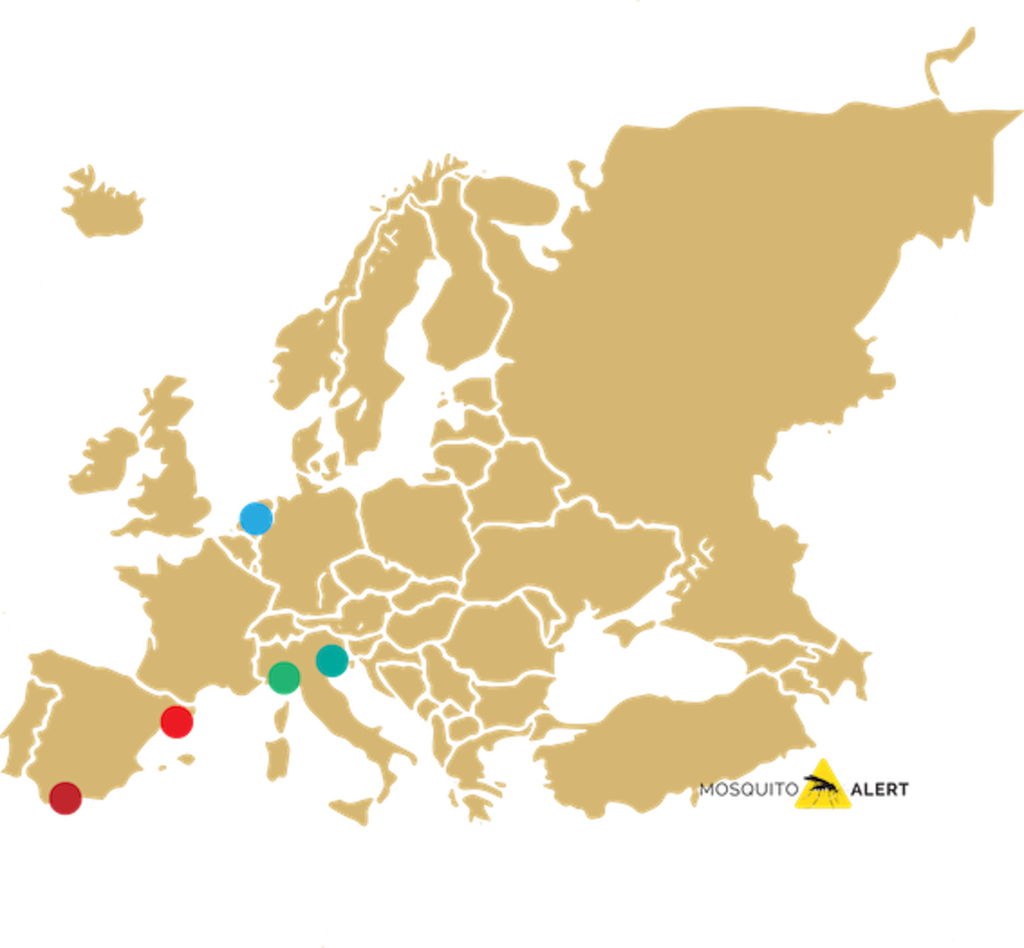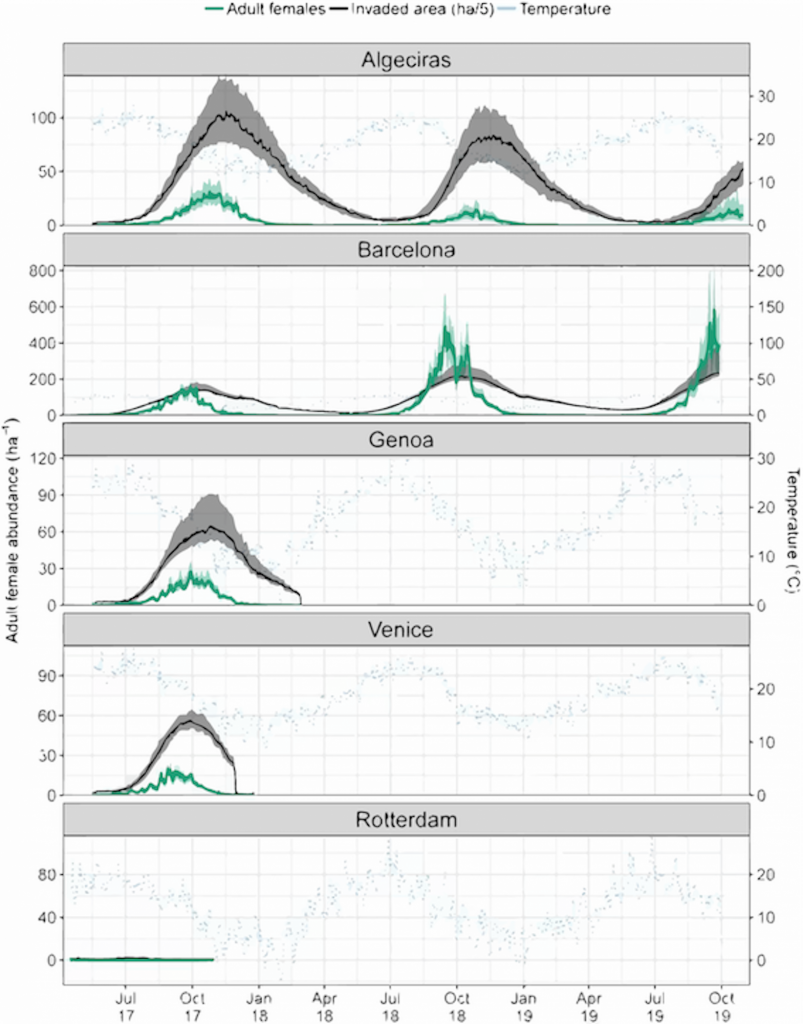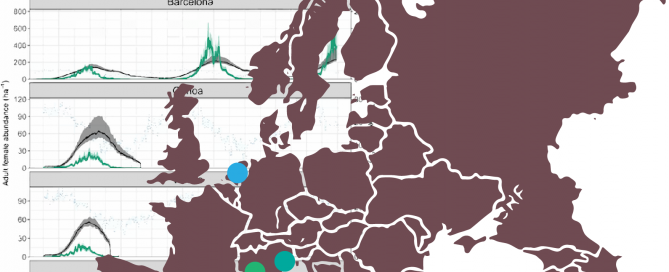The yellow fever mosquito, Aedes aegypti, is considered one of the main world health problems. This is due, on the one hand, to its ability to transmit dengue or Zika viruses, as well as its ability to inhabit urban environments. The species is native to Sub-Saharan Africa but the slave trade between the 15th and 19th centuries transported it from West Africa to the Americas and Europe.
Today the mosquito is not present in continental Europe, but it was until the 20th century. From Portugal to the Black Sea, the species was found in a large number of European ports, where it gave rise to significant outbreaks of yellow fever for centuries. The causes of his disappearance from the continent are unknown. It is suggested that hygiene improvements in water canalization systems, as well as the widespread use of insecticides to reduce the risk of malaria, led to its extinction.
But in recent years it has been detected several times in Europe or in geographic or politically connected areas with the continent. In the Netherlands the species was detected in 2010, to be observed again in 2016. On the east coast of the Black Sea the species is established, occupying territories of Russia, Georgia and Turkey. To the west, in the middle of the Atlantic, the Portuguese island of Madeira has had stable populations of the species since 2004. In Egypt the species was detected in 2017 on the shores of the Red Sea.
In recent years several introductions have been detected in Europe or adjacent areas
In continental Europe the presence of the species has not yet been detected, but the numerous urban areas distributed along its coast represent favorable habitats for the establishment of the species. Its ports and adjacent urban areas are characterized by being the gateway for a large number of exotic species due to intense international trade. The continued transit of goods from Asia and America where the species is established increases the chances that it will make its way to the mainland Europe. Due to their climatic and urban conditions, the cities of the Mediterranean basin are those that present the greatest risk, as suggested by a new study based on simulations.
The work has focused on evaluating the possibility of the species establishing itself in five of the European ports with the highest commercial traffic: Algeciras, Barcelona, Venice, Genoa and Rotterdam.

Fig.1. Map with the location of the five ports analyzed by the study by Da Re et al. 2020. From south to north they are: Algeciras, Barcelona, Genoa, Venice and Rotterdam. Source: Mosquito Alert CC-BY 2.0
The climate, the urban structure and the road network determine the establishment of the mosquito
Considering the temperatures of each one, as well as the urban structure and its connectivity with other populations, the authors have developed a model to simulate the viability of the accidental arrival of a few individuals of Aedes aegypti to one of them. The question to answer that the study raised to the authors was: if it reaches any of these ports, can it be established? To answer it, they considered several factors. Among them climatic, but also the size of human populations, as well as its road and transport network, which has been shown to facilitate the passive dispersal of mosquitoes.
To estimate whether the mosquito could settle in one place and how their populations would grow, they took into account the probabilities of survival, reproduction and dispersal of the different phases of the mosquito’s life cycle. For example, they considered the probability that an egg would survive from one day to the next, that it would hatch, that the larvae would develop into pupae, and that they would emerge as adults. They included the probability of survival of the adult mosquito from one day to the next, that it matured sexually, the probability of being able to feed on blood and the number of eggs they laid, as well as the probability of dispersing in search of a host, or the probability of getting into a car and being transported to another place (for this probability they used the probabilities estimated by Mosquito Alert in the surroundings of Barcelona).
Considering all these parameters, they concluded that the city with the highest risk of establishing the species is Barcelona, followed by Algeciras. In Barcelona, the climatic conditions and the urban fabric is where there could be a greater growth and spread of its populations. From there the species could expand to the south, north and interior of the city, occupying new municipalities.

Fig. 2. Study simulation results for each of the 5 cities. They show the dynamics of the populations of Aedes aegypti over two years from an accidental introduction. The green line represents the number of female mosquitoes. The gray the invaded area where the species could be dispersed in this period. The blue line is the oscillation of the temperature throughout the year. Note that the scales of the figures are different between cities to facilitate visualization, but while the abundance of mosquitoes in Algeciras does not reach the value of 50, in Barcelona it shoots above 500, while in Italian ports it is barely reaches 30. Source: original figure by Da Re et al. 2020. BioRxiv 10.1101 / 2020.06.04.133785
Barcelona and Algeciras are the port cities where the yellow fever mosquito could establish itself if it accidentally arrives
On the other hand, the populations introduced in Genoa, Venice and Rotterdam could persist for a more or less long period of months, but in none of these sites could the species overcome winters. The yellow fever mosquito, unlike the tiger mosquito, does not go into diapause, being much more susceptible to disappearing during winters in temperate zones. Not so in the mild winters of the Mediterranean regions.
Surveillance is essential to detect future invasions early
Although it is a study based on simulations and mathematical models, it is one of several that warn of how susceptible the southern Mediterranean basin is to the arrival of this species. In these cities you would find everything you need to develop, a good temperature, abundant guests and a large number of places where you can breed. Aedes aegypti is a much more urban species than the tiger mosquito, adapted to living and entering closed spaces.
Traditional surveillance programs and citizen science programs, such as the Mosquito Alert program, are essential in order to detect possible early introductions of the species to the continent and carry out control actions to eradicate it before they are permanently established as it happened with the tiger mosquito. Studies like this help to know where to put the focus of surveillance.
References:
Abozeid S, Elsayed AK, Schaffner F, Samy AM. 2018. Re-emergence of Aedes aegypti in Egypt. The Lancet Infectious Diseases 18: 142-143
Blackburn TM, Cassey P, Duncan RP. 2020. Colonization pressure: a second null model for invasion biology. Biological Invasions 22: 1221-1233
Brown JE, Scholte EJ, Dik M, Den Hartog W, Beeuwkes J, Powell JR. 2011. Aedes aegypti mosquitoes imported into the Netherlands, 2010. Emerging Infectious Diseases 17: 2335
Da Re D, Montecino-Latorre D, Vanwembeke SO, Marcantonio M. 2020. Assessing the re-introduction of Aedes aegypti in Europe. Will the Yellow Fever Mosquito colonize the Old World? BioRxiv 10.1101/2020.06.04.133785
Ibañez-Justicia A, Gloria-Soria A, Den Hartong W, Dik M, Jacobs F, Stroo A. 2017. The first detected airline introductions of yellow fever mosquitoes (Aedes aegypti) to Europe, at Schiphol International Airport, The Netherlands. Parasites & Vectors 10: 603
Kraemer MU, Reiner RC, Brady OJ, Messina JP, Gilbert M, Pigott DM, Yi D, Johnson K, Earl L, Marczak LB, et al. 2019. Past and future spread of the arbovirus vectors Aedes aegypti and Aedes albopictus. Nature Microbiology 4: 854
Schaffner F, Mathis A. 2014. Dengue and dengue vectors in the WHO European region: past, present, and scenarios for the future. The Lancet Infectious Diseases 14: 1271-1280




